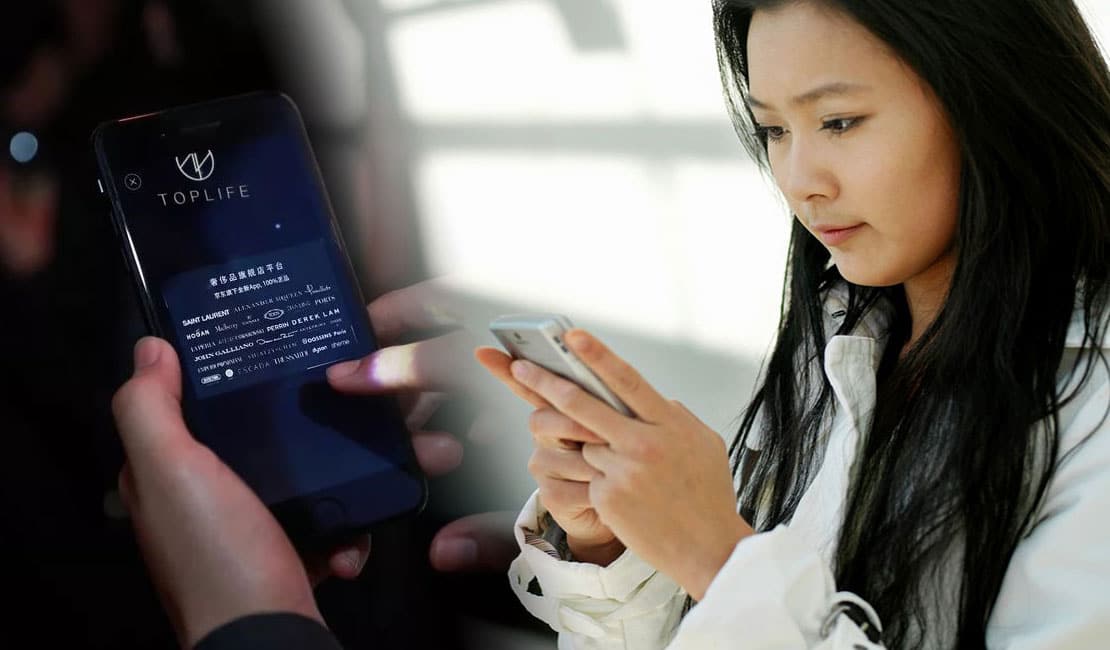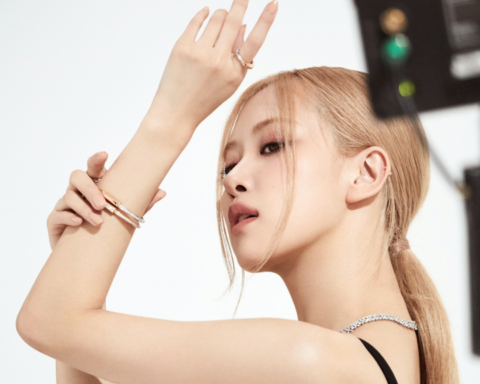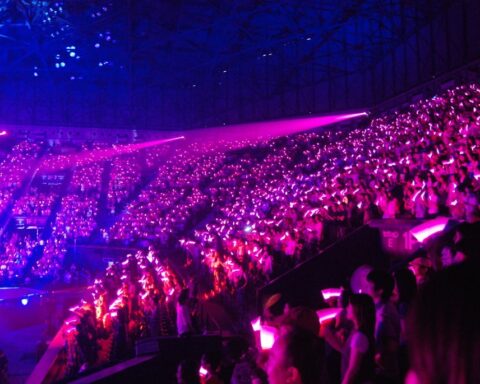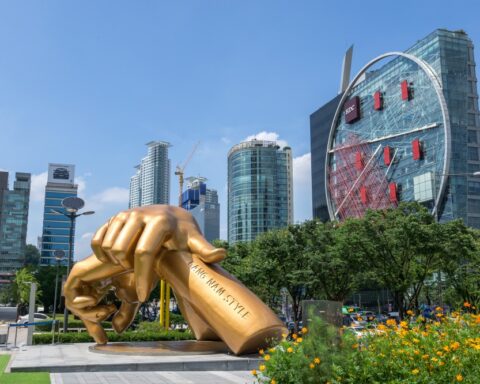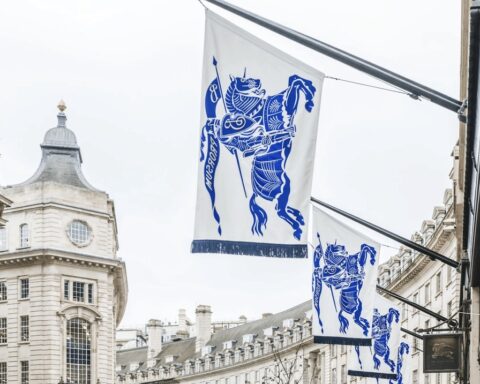[vc_row njt-role=”people-in-the-roles” njt-role-user-roles=”administrator,editor,author,armember”][vc_column][vc_column_text]
The luxury market in China is struggling to recover. Buyers are not loyal to a brand or a platform, but to muses and influencers. Gone are the brands and hello partnerships? It’s time for a change with livestreaming. In order to re-loyalize customers, brands are full of imagination and are focusing more on Web 3. Discover without further delay the last part of this complete and detailed survey on e-commerce in China.
Another difficulty of the Chinese market is that brand preference is different from that of the West. As Yuan Zhou reminds us, “Chinese people have very little loyalty, neither to the platform nor to the brands. On the other hand, they are more loyal to muses and influencers (KOLs)”. This Chinese expert from the Hylink agency adds “Beyond the entertainment function, livestreaming has gained importance in the daily life of the Chinese. Since the COVID, it is about understanding the uses of products, trends, how to dress, make-up…“.
In influence, it’s also time for change: if the biggest livestreamers, Viya and Li Jiaqi, have been caught in scandals, brands are turning to alternatives that are less budget-consuming and more secure for their image.
Indeed, the use of these digital shopping headliners required, in addition to a commission on sales, aggressive discounts, exclusive products and good deals for their fans. Thus, on Chinese social networks, nano influencers are very popular, as well as virtual influencers, very present during Alibaba’s Single’s Day with Timo or Ayayi. A way to seduce a younger clientele, belonging to the generation Z (16% of the population according to Satista). This cohort of individuals born between 2000 and 2010 has experienced the country’s dazzling economic development and represents the first Digital Native generation.
For Anaïs Bournonville from GMA, “If [this] influencer livestreaming (KOL) remains the most mediatized in Europe, there is another format, more respectful of the luxury experience: brand livestreaming. In this case, the product is presented in video by a member of the House from a much more editorial angle, based on the history of the House and its codes“.
Given the economic climate and the flagging confidence of the Chinese population, a taste for a less ostentatious, more discreet but no less exclusive luxury could well emerge.
Yuan Zhou points out that “the policy of common prosperity, instituted by President Xi Jinping last summer, will not only impact marketing influence, it may also lead to a shift in purchasing behavior of Chinese customers towards less well-known and less ostentatious brands“.
Platforms are preparing for this. This is the case for JD.com and Tmall Luxury Pavilion, which, in addition to distributing big international names, are increasingly focusing on niche and designer brands. This is also a way to capitalize on the development of the local fashion scene and the economic patriotism mixing streetwear and ancestral tradition that the Guochao trend represents. In the next 3 to 5 years, more than 2000 fashion & luxury niche brands and designers are expected to arrive on the Chinese market.
Farfetch is betting on the exceptional, opening this summer to all private customers a privileged access to its Fashion Concierge via its mobile application. Customers can ask the Concierge to find unique, rare, hard-to-find or out-of-stock products that are not yet available on the marketplace.
The luxury e-commerce market in China can also count on capturing customers who have long been unaddressed, especially in secondary category cities (especially tier 3, 4 and 5). Tmall Luxury Pavilion’s Single’s Day has noted an increase in this type of customer of around 50% by 2021.
These cities, often neglected by brands, preferring to open their stores in cities of primary importance, would nevertheless contain nearly half of the country’s luxury consumption according to a BCG x Tencent study in 2019. It is to further democratize the purchase of luxury among these affluent but remote populations that the opening of stores in the 2nd and 3rd tiers has accelerated during the COVID years, especially in Chengdu and Hangzhou.
Finally, a theme highlighted by Alibaba during its Single’s Day 2022, the metaverse also represents an opportunity for brands to reach a clientele that was previously inaccessible, either geographically or culturally, such as the Gen Z communities linked to gaming.
This immersive universe where avatars live virtual experiences – called the Chinaverse on this side of the world – is estimated to be worth $8 trillion, while 37 million active users in China should have a virtual identity by 2025, according to IDC. But where Europe is only in its exploration phase, in China, the metaverse is already in the present. A dimension that has not escaped the major international brands Balenciaga, Louis Vuitton and Dior, pioneers in these intertwined worlds.
Dior marked the occasion with its virtual exhibition On the Road, followed by its spring-summer 2023 show via Meta-Ziwu, all accessible via the virtual reality mobile application XiRang designed by the search engine Baidu.
A few months earlier, for its Spring-Summer 2022 show, Dior invited the virtual version of Jian Tian, its skincare ambassador and actress from the movie Pacific Rim. This avatar – created by the agency Hylink and named Tian Xiaotan – was dressed in the House’s collections and interacted with fans online. The announcement of her arrival in Greece on Weibo went viral within 24 hours, generating 8 million impressions and 207,000 discussions. ByteDance, the parent company of Tiktok and Douyin is betting a lot on this virtual reality, especially since it bought in 2021 Pico Interactive, the 3rd VR headset manufacturer in the world.
Tmall has launched its HeySpace virtual showcase divided into six themed spaces to celebrate the lunar year of the hare. Alibaba’s star marketplace has invited around 20 luxury and non-luxury brands to revisit the image of the men’s magazine Playboy.
For its part, Farfetch, at the forefront of service and technology, is also banking on web 3, as Carol Hilsum, senior director innovation product, said: “web 3 is starting to really influence the way people think about community, ownership and authenticity“. The western marketplace has just launched its Dream Assembly Base Camp, a Web 3 startup gas pedal in collaboration with Outlier Ventures.
Luxury e-commerce in China is undergoing a major transformation. However, it is only one part of the strategy to be deployed in a post-covid and post-confinement world. Customers, especially those of generation Z, are also demanding out-of-home digital experiences. A demand that should not be underestimated as the Chinese clientele is set to represent more than 40% of global luxury consumers by 2030, according to a recent study by Bain & Company and Altagamma.
Read also >Survey: China’s luxury e-commerce on the road to maturity (part 2)
Featured photo : © Press[/vc_column_text][/vc_column][/vc_row][vc_row njt-role=”not-logged-in”][vc_column][vc_column_text]
The luxury market in China is struggling to recover. Buyers are not loyal to a brand or a platform, but to muses and influencers. Gone are the brands and hello partnerships? It’s time for a change with livestreaming. In order to re-loyalize customers, brands are full of imagination and are focusing more on Web 3. Discover without further delay the last part of this complete and detailed survey on e-commerce in China.
Another difficulty of the Chinese market is that brand preference is different from that of the West. As Yuan Zhou reminds us, “Chinese people have very little loyalty, neither to the platform nor to the brands. On the other hand, they are more loyal to muses and influencers (KOLs)”. This Chinese expert from the Hylink agency adds “Beyond the entertainment function, livestreaming has gained importance in the daily life of the Chinese. Since the COVID, it is about understanding the uses of products, trends, how to dress, make-up…“.
In influence, it’s also time for change: if the biggest livestreamers, Viya and Li Jiaqi, have been caught in scandals, brands are turning to alternatives that are less budget-consuming and more secure for their image.
Indeed, the use of these digital shopping headliners required, in addition to a commission on sales, aggressive discounts, exclusive products and good deals for their fans. Thus, on Chinese social networks, nano influencers are very popular, as well as virtual influencers, very present during Alibaba’s Single’s Day with Timo or Ayayi. A way to seduce a younger clientele, belonging to the generation Z (16% of the population according to Satista). This cohort of individuals born between 2000 and 2010 has experienced the country’s dazzling economic development and represents the first Digital Native generation.
For Anaïs Bournonville from GMA, “If [this] influencer livestreaming (KOL) remains the most mediatized in Europe, there is another format, more respectful of the luxury experience: brand livestreaming. In this case, the product is presented in video by a member of the House from a much more editorial angle, based on the history of the House and its codes“.
Given the economic climate and the flagging confidence of the Chinese population, a taste for a less ostentatious, more discreet but no less exclusive luxury could well emerge.
Yuan Zhou points out that “the policy of common prosperity, instituted by President Xi Jinping last summer, will not only impact marketing influence, it may also lead to a shift in purchasing behavior of Chinese customers towards less well-known and less ostentatious brands“.
Platforms are preparing for this. This is the case for JD.com and Tmall Luxury Pavilion, which, in addition to distributing big international names, are increasingly focusing on niche and designer brands. This is also a way to capitalize on the development of the local fashion scene and the economic patriotism mixing streetwear and ancestral tradition that the Guochao trend represents. In the next 3 to 5 years, more than 2000 fashion & luxury niche brands and designers are expected to arrive on the Chinese market.
Farfetch is betting on the exceptional, opening this summer to all private customers a privileged access to its Fashion Concierge via its mobile application. Customers can ask the Concierge to find unique, rare, hard-to-find or out-of-stock products that are not yet available on the marketplace.
The luxury e-commerce market in China can also count on capturing customers who have long been unaddressed, especially in secondary category cities (especially tier 3, 4 and 5). Tmall Luxury Pavilion’s Single’s Day has noted an increase in this type of customer of around 50% by 2021.
[…][/vc_column_text][vc_cta h2=”This article is reserved for subscribers.” h2_font_container=”tag:h2|font_size:16|text_align:left” h2_use_theme_fonts=”yes” h4=”Subscribe now !” h4_font_container=”tag:h2|font_size:32|text_align:left|line_height:bas” h4_use_theme_fonts=”yes” txt_align=”center” color=”black” add_button=”right” btn_title=”I SUBSCRIBE !” btn_color=”danger” btn_size=”lg” btn_align=”center” use_custom_fonts_h2=”true” use_custom_fonts_h4=”true” btn_button_block=”true” btn_custom_onclick=”true” btn_link=”url:https%3A%2F%2Ftest2023.luxus-plus.com%2Fen%2Fsubscriptions-and-newsletter-special-offer-valid-until-september-30-2020-2-2%2F”]Get unlimited access to all articles and live a new reading experience, preview contents, exclusive newsletters…
Already have an account ? Please log in.[/vc_cta][vc_column_text]Featured photo : © Press[/vc_column_text][/vc_column][/vc_row][vc_row njt-role=”people-in-the-roles” njt-role-user-roles=”subscriber,customer”][vc_column][vc_column_text]
The luxury market in China is struggling to recover. Buyers are not loyal to a brand or a platform, but to muses and influencers. Gone are the brands and hello partnerships? It’s time for a change with livestreaming. In order to re-loyalize customers, brands are full of imagination and are focusing more on Web 3. Discover without further delay the last part of this complete and detailed survey on e-commerce in China.
Another difficulty of the Chinese market is that brand preference is different from that of the West. As Yuan Zhou reminds us, “Chinese people have very little loyalty, neither to the platform nor to the brands. On the other hand, they are more loyal to muses and influencers (KOLs)”. This Chinese expert from the Hylink agency adds “Beyond the entertainment function, livestreaming has gained importance in the daily life of the Chinese. Since the COVID, it is about understanding the uses of products, trends, how to dress, make-up…“.
In influence, it’s also time for change: if the biggest livestreamers, Viya and Li Jiaqi, have been caught in scandals, brands are turning to alternatives that are less budget-consuming and more secure for their image.
Indeed, the use of these digital shopping headliners required, in addition to a commission on sales, aggressive discounts, exclusive products and good deals for their fans. Thus, on Chinese social networks, nano influencers are very popular, as well as virtual influencers, very present during Alibaba’s Single’s Day with Timo or Ayayi. A way to seduce a younger clientele, belonging to the generation Z (16% of the population according to Satista). This cohort of individuals born between 2000 and 2010 has experienced the country’s dazzling economic development and represents the first Digital Native generation.
For Anaïs Bournonville from GMA, “If [this] influencer livestreaming (KOL) remains the most mediatized in Europe, there is another format, more respectful of the luxury experience: brand livestreaming. In this case, the product is presented in video by a member of the House from a much more editorial angle, based on the history of the House and its codes“.
Given the economic climate and the flagging confidence of the Chinese population, a taste for a less ostentatious, more discreet but no less exclusive luxury could well emerge.
Yuan Zhou points out that “the policy of common prosperity, instituted by President Xi Jinping last summer, will not only impact marketing influence, it may also lead to a shift in purchasing behavior of Chinese customers towards less well-known and less ostentatious brands“.
Platforms are preparing for this. This is the case for JD.com and Tmall Luxury Pavilion, which, in addition to distributing big international names, are increasingly focusing on niche and designer brands. This is also a way to capitalize on the development of the local fashion scene and the economic patriotism mixing streetwear and ancestral tradition that the Guochao trend represents. In the next 3 to 5 years, more than 2000 fashion & luxury niche brands and designers are expected to arrive on the Chinese market.
Farfetch is betting on the exceptional, opening this summer to all private customers a privileged access to its Fashion Concierge via its mobile application. Customers can ask the Concierge to find unique, rare, hard-to-find or out-of-stock products that are not yet available on the marketplace.
The luxury e-commerce market in China can also count on capturing customers who have long been unaddressed, especially in secondary category cities (especially tier 3, 4 and 5). Tmall Luxury Pavilion’s Single’s Day has noted an increase in this type of customer of around 50% by 2021.
[…][/vc_column_text][vc_cta h2=”This article is reserved for subscribers.” h2_font_container=”tag:h2|font_size:16|text_align:left” h2_use_theme_fonts=”yes” h4=”Subscribe now !” h4_font_container=”tag:h2|font_size:32|text_align:left|line_height:bas” h4_use_theme_fonts=”yes” txt_align=”center” color=”black” add_button=”right” btn_title=”I SUBSCRIBE !” btn_color=”danger” btn_size=”lg” btn_align=”center” use_custom_fonts_h2=”true” use_custom_fonts_h4=”true” btn_button_block=”true” btn_custom_onclick=”true” btn_link=”url:https%3A%2F%2Ftest2023.luxus-plus.com%2Fen%2Fsubscriptions-and-newsletter-special-offer-valid-until-september-30-2020-2-2%2F”]Get unlimited access to all articles and live a new reading experience, preview contents, exclusive newsletters…
Already have an account ? Please log in.[/vc_cta][vc_column_text]Featured photo : ©Press[/vc_column_text][/vc_column][/vc_row][vc_row njt-role=”people-in-the-roles” njt-role-user-roles=”subscriber,customer”][vc_column][vc_column_text]


